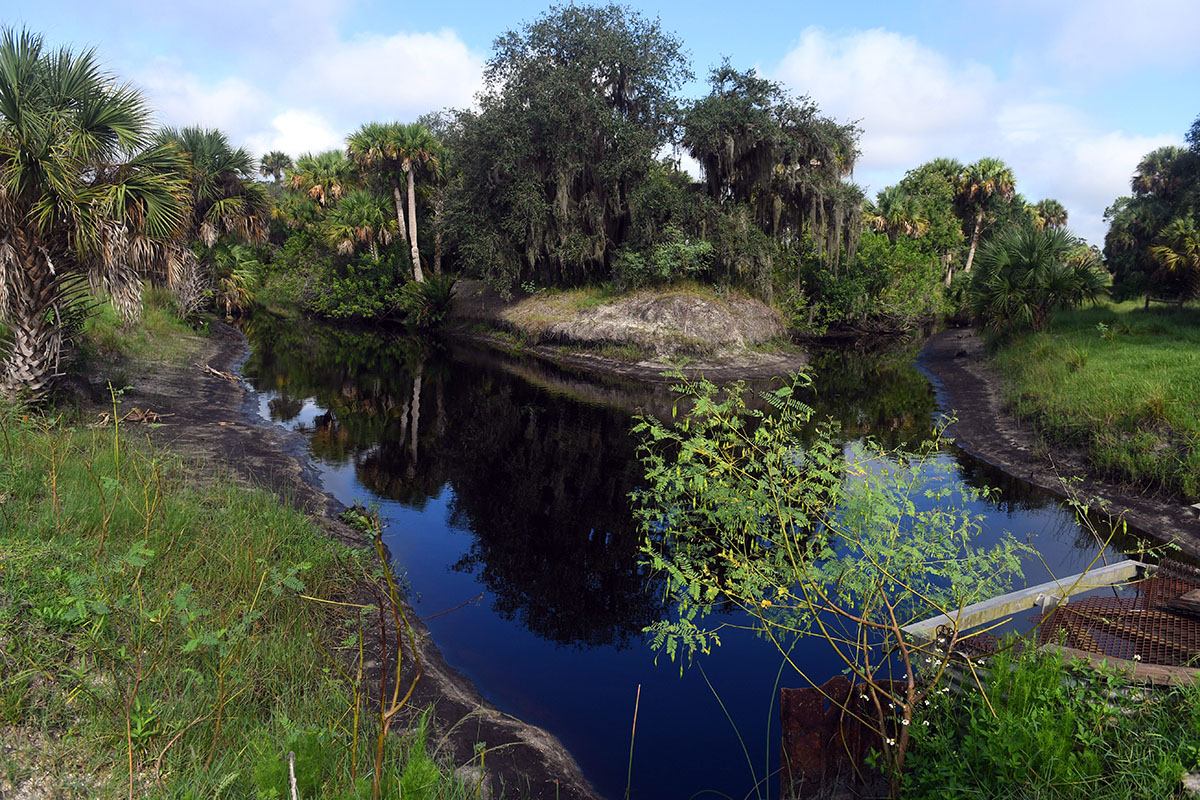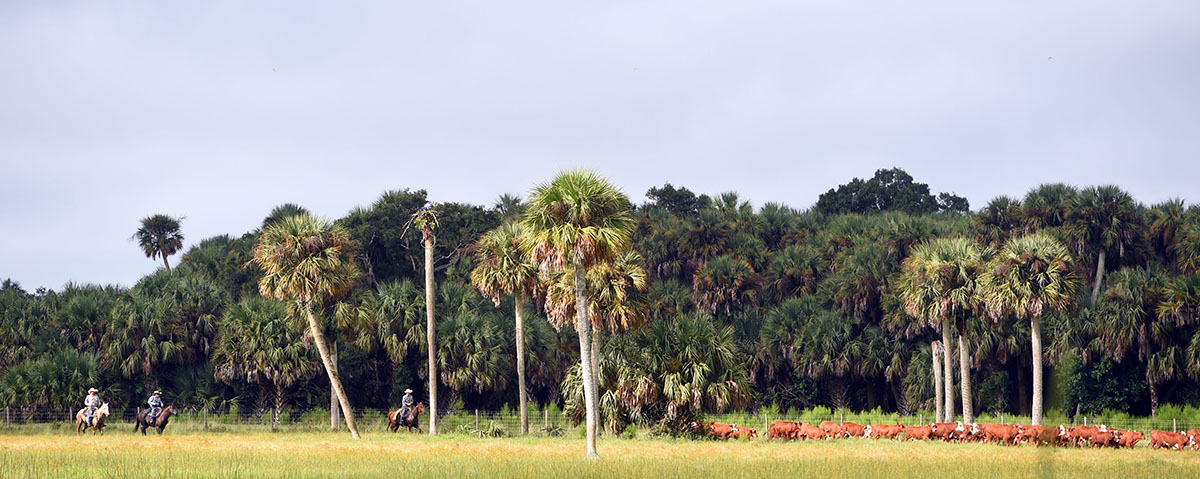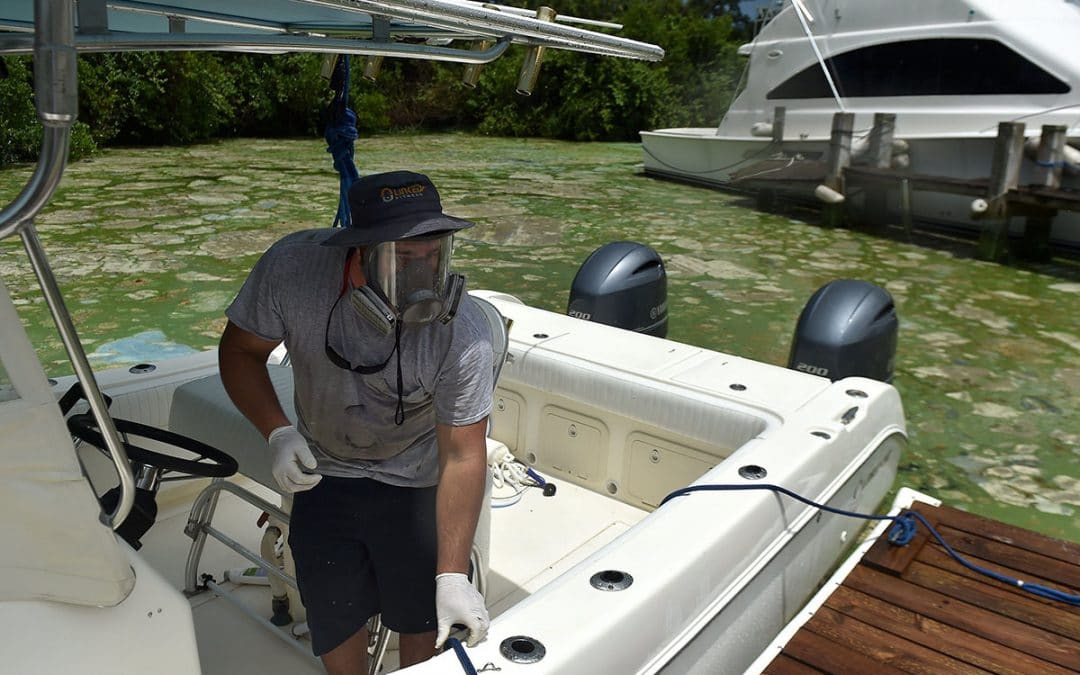But beneath this idyllic scene, a silent byproduct lurks. Phosphorus levels, mostly from fertilizer and cow manure, exceeded the state pollution limit by 19 times.
The problem is not exclusive to this Rio Rancho Corp. farm. Rainfall runoff that flows into Lake O from hundreds of surrounding properties routinely exceeds the limit – without the state imposing any consequences, a TCPalm investigation found.
All 32 drainage basins around the lake with available data exceeded the limit over a five-year average, according to TCPalm’s analysis of “water year” data from May 2016 to April 2021. Rio Rancho was just the worst in the last two years. Even lesser polluters exceeded the limit by over 100%.
The data proves – for the first time – that Florida’s flagship program to reduce water pollution isn’t working. And that pollution is contaminating waterways and sparking toxic algal blooms in the St. Lucie and Caloosahatchee rivers.
“All one has to do is look at the water for the evidence,” said Indian Riverkeeper Mike Conner, who heads a Treasure Coast nonprofit that advocates for clean water. “The impairment of Florida waters is now at an all-time high.”
BMAP Fails to Curb Water Pollution
The Department of Environmental Protection (DEP) oversees the program involving legally enforceable goals and strategies to reduce pollution, called Basin Management Action Plans (BMAPs). There are 38 plans customized to help waterways in their region.
For the Lake O BMAP, the agency set the phosphorus limit at 40 parts per billion two decades ago, but the basins have exceeded that by a median 5 to 7 times over the five-year average, TCPalm found.
The worst polluter over those five years – 22 times over the limit – was the East Beach Drainage District, on Lake O’s southeast shore, near Pahokee.
State records don’t show that though. DEP historically touts progress that often doesn’t match reality because it uses models to give credit for pollution-reduction measures – from reservoirs to informational brochures – assuming they produce intended results. DEP’s resulting graphics, used in public presentations, show progress is being made.
The truth is in the data recorded by the South Florida Water Management District (SFWMD) water-quality monitors, which TCPalm analyzed.
DEP has started using some SFWMD data to track pollution entering Lake O, spokesperson Alexandra Kuchta said. However, many questions TCPalm posed remain unanswered, such as: When did that start? What is modeling still used for? What happens when data and modeling don’t show the same outcomes?
“BMAPs aren’t working, and we’re having harmful algal blooms every time we turn around,” Calusa WaterkeeRer John Cassani said. “It’s killing seagrass, and manatees are starving. It’s a bad cascade that’s occurring now.”

BMP Lacks Enforcement
The Department of Agriculture and Consumer Services (DACS) oversees the rules, called Best Management Practices (BMP), such as avoiding nutrient-heavy fertilizers, irrigating in ways to reduce runoff, and buffering the land from nearby waterways.
The Florida administrative code says DACS will refer noncompliant farmers to DEP for enforcement. However, “DACS has the authority to take enforcement on its own,” but has “simply chosen to rely on DEP to do so,” the DEP spokesperson said.
BMP has “no teeth,” said Agriculture Commissioner Nikki Fried, who heads DACS.
“That’s how the program unfortunately was designed,” she said. “There’s a carrot and stick. We’re the carrot and DEP is the stick. And the stick is not working.”
DACS needs to crack down, she acknowledged, and is now gathering data to do so.
Warning Letters to Farmers
DEP, which doesn’t routinely conduct on-site inspections or fine polluters, said “insufficient data” prevents it from enforcing the rules, according to documents.
DEP mails warning letters instructing farmers to either enroll in BMP or pay for water-quality monitoring. The letters state DEP wants “cooperation” from farmers “without the need for taking formal enforcement against you; however, you must take immediate action to bring your property into compliance with Florida law.”
Farmers have 21 days to respond. If they don’t, they might get another letter. At least 872 farmers had ignored their warning letters as of Nov. 2, according to DEP.
State law gives DEP the power to issue fines up to $50,000, but the agency said it never has, nor filed a lawsuit, in the five years the program has been enforceable.

Farmers Like Cooperative Approach
Lazaro Caballero, who owns one of the 254 parcels DACS referred to DEP on May 3 alone, said he never received a letter and no one told him BMP was mandatory.
Letters to Unlimited Turf LLC were returned “as undeliverable” because he sold the land in 2019, according to DEP, which said it asked DACS to determine whether the current owner is BMP-compliant, but has not heard back.
Sutton Rucks, owner of a fourth-generation Okeechobee dairy farm that’s enrolled in BMP, lauded the state’s cooperative approach over “a rule-with-an-iron-fist type program,” saying that would have driven him out of the industry.
“I would’ve sold my cows and turned it into houses and let it be someone else’s problem,” he said. “The cooperative effort has kept my family in the business.”
His Milking R Dairy farm north of Lake O produced 14 tons of phosphorus – over 10 times the limit – from May 2020 to April 2021, according to SFWMD data.
“It’s like a thimble in a bathtub,” he said. “Maybe it’s a little elevated, but a water sample might not tell the whole story of what some of these folks, including us, are trying to do to make things better.”
Adams Ranch, a 40,000-acre cattle and citrus farm west of Fort Pierce, has worked with the state for four generations. President Mike Adams, who remembers more stringent regulations in the early 1990s, agreed with the state’s cooperative approach.
“If you don’t have a strong ag economy, urbanization will be the next use,” he said. “Is a cattle ranch less impactful than urbanization? Or citrus groves or even row crops?”
What Happened to Desantis’ Promises?
When Gov. Ron Desantis took office in 2019, he proposed a slew of changes to improve water quality, including penalties for noncompliant farmers. DEP lauded it as a “deterrent” that would “ensure immediate and continued compliance” with BMP.
It never happened.
Some guidelines were included in the Clean Waterways Act that took effect in 2020. DeSantis praised the law, which requires DACS to inspect farms for BMP compliance every two years, as a “strong step forward for Florida’s environment.”
DACS doesn’t have enough staff for that, said Chris Pettit, the agricultural water policy director, but the agency will ask for more when the Legislature convenes Jan. 11.
So is BMP effective? Pettit never gave TCPalm a direct answer, only said DEP, DACS and the SFWMD have “the right people” who meet monthly and work well together.
“We have very, very good communication as issues arise,” he said. “I think that the program has matured over time. I think that we are getting better.”
The governor declined TCPalm’s request for an interview, and spokesperson Jared Williams’ prepared statement does not address the program’s efficacy.
“The state is in the best position it has ever been to take strategic action to improve our water quality, and Florida has done just that,” it reads, referring to a 2019 executive order that created the Blue-Green Algae Task Force and supports $2 billion for Everglades restoration and water protection. Desantis also wants the Legislature to budget $960 million more for the environment during the 2022 session.
Florida environmentalists maintain the water would be clean if the programs worked.
“Look at the state of some of the waters in Florida right now,” Indian Riverkeeper Mike Conner said. “I don’t think anybody in their right mind will say, ‘Yeah, this is working great.’ I just don’t think anybody could claim victory at this point.”
TCPalm’s exclusive investigation of Florida’s flagship program to limit nutrient pollution flowing into Lake Okeechobee is the first to show that every single rainfall runoff drainage basin around the lake with available data exceeds the state’s limits.
Reporters analyzed data, maps, warning letters to noncompliant landowners and hundreds of other documents, some obtained through state open records laws. They also interviewed nearly a dozen farmers, environmentalists and public officials.
Read Full Article on TC Palm

























